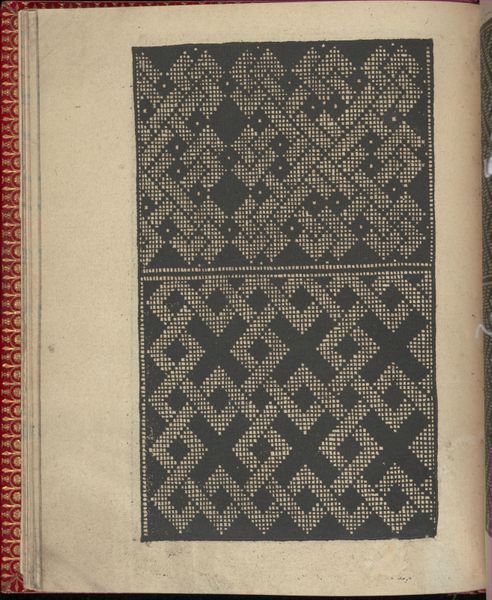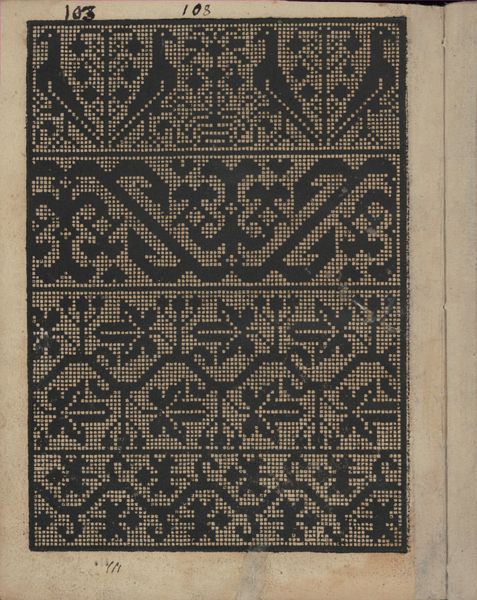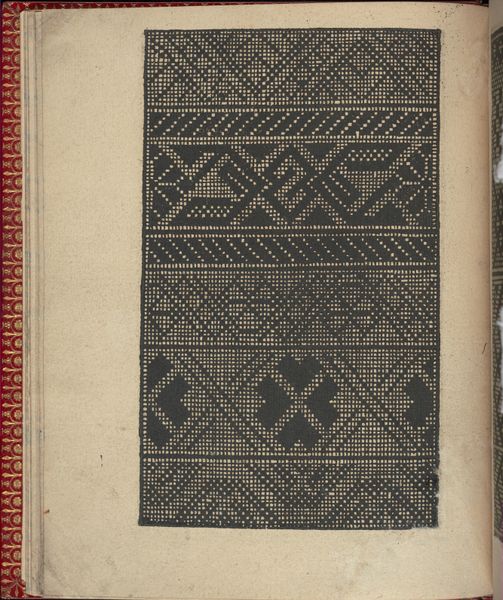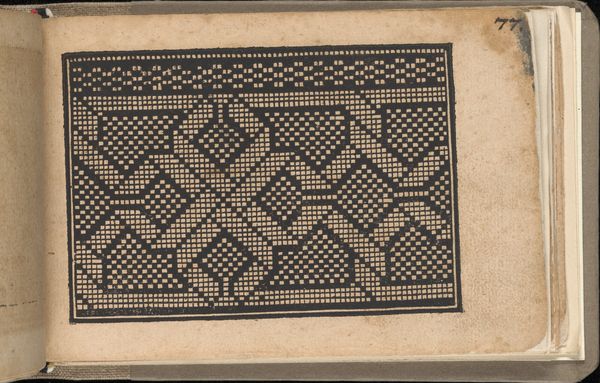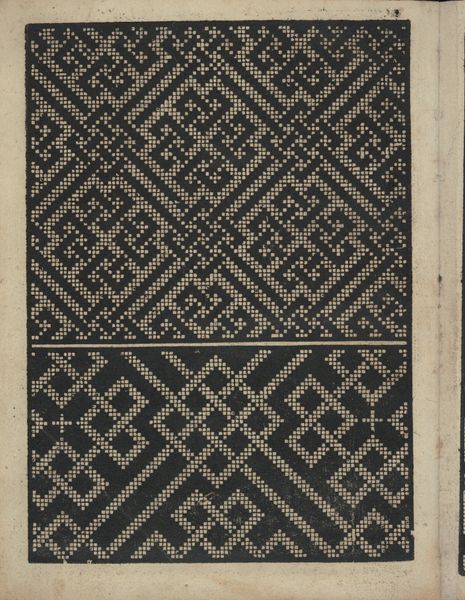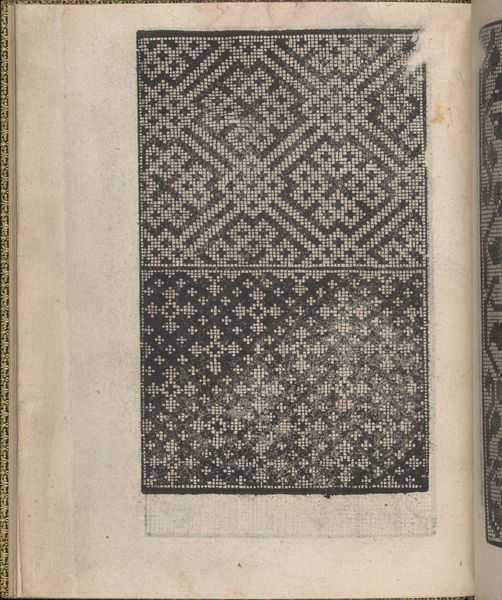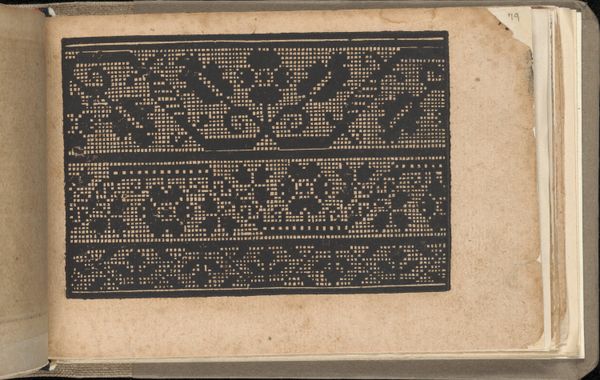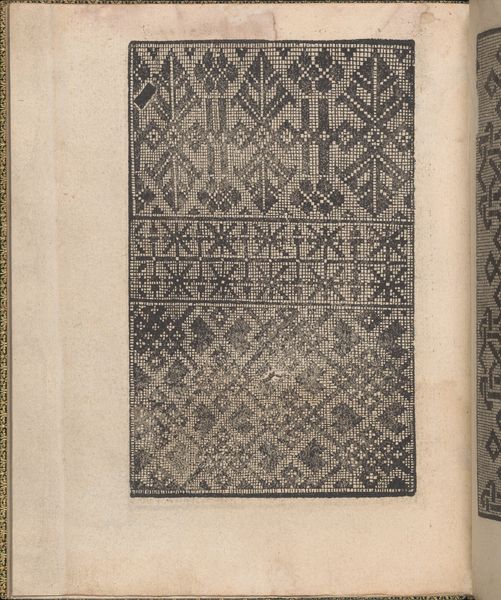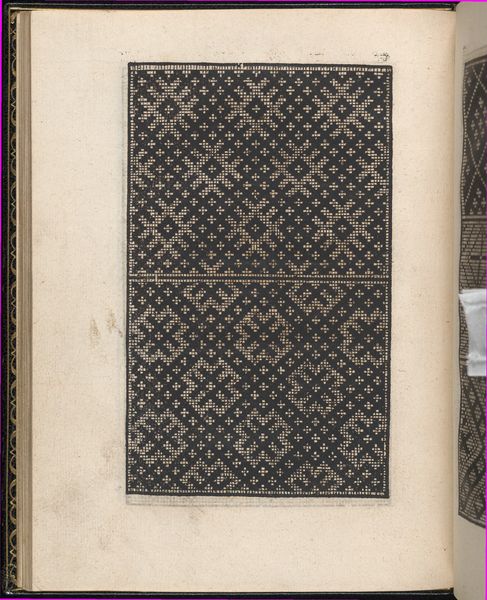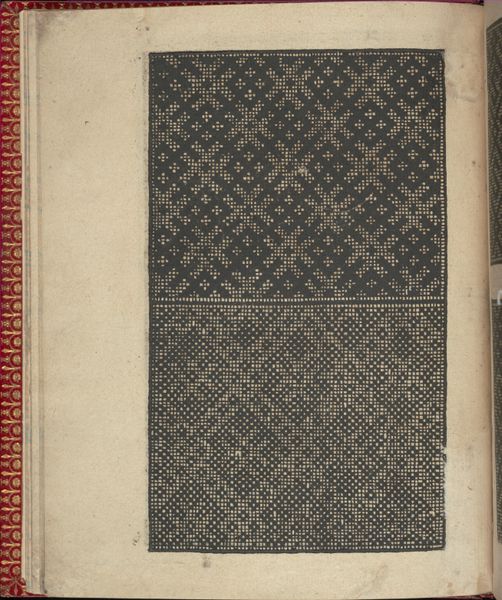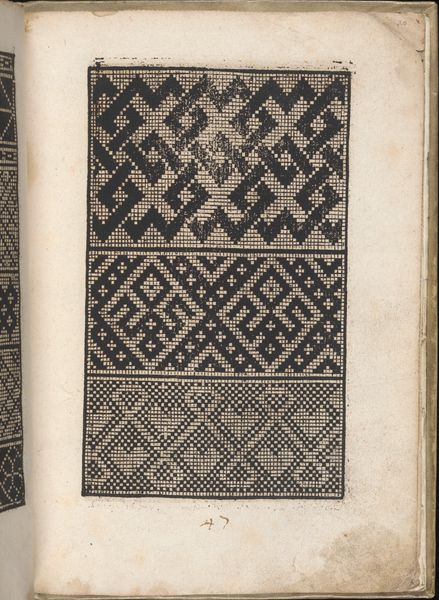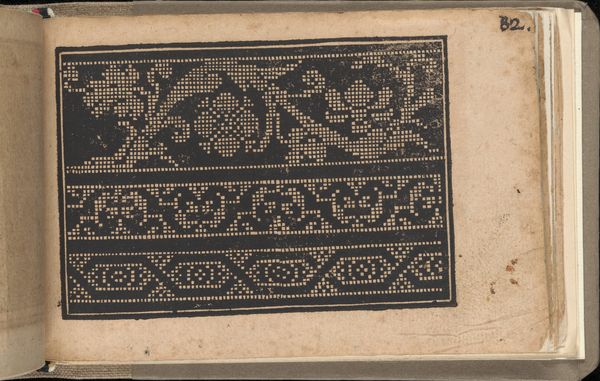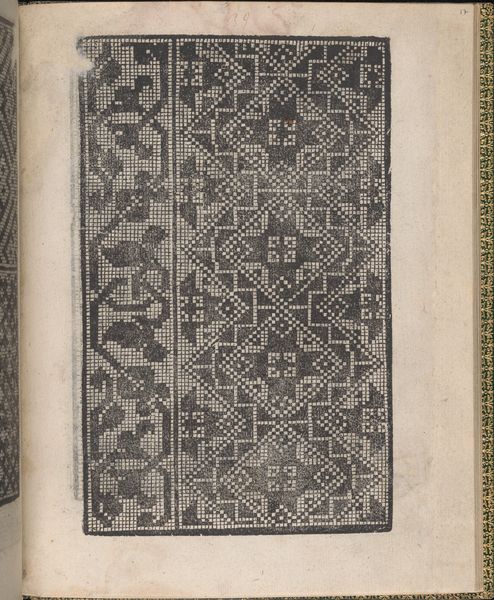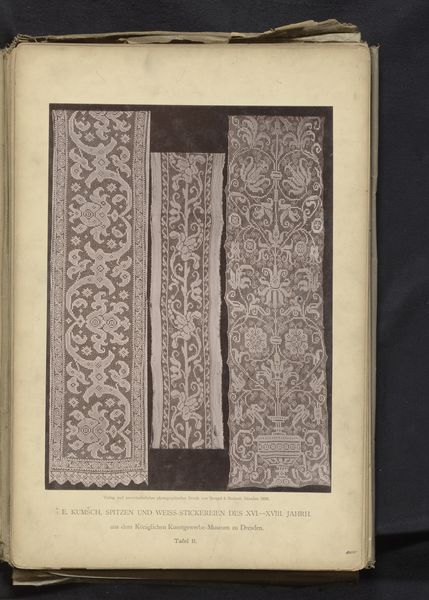
drawing, graphic-art, ornament, print, ink
#
drawing
#
graphic-art
#
ornament
#
medieval
# print
#
ink
#
geometric
Dimensions: Overall: 7 13/16 x 6 3/16 x 3/8 in. (19.8 x 15.7 x 1 cm)
Copyright: Public Domain
Editor: So, here we have "Essempio di recammi, page 5 (verso)" created around 1530 by Giovanni Antonio Tagliente. It’s an ink drawing, a print from a book, depicting a design, I guess, for embroidery. It strikes me as incredibly detailed, especially considering it's a functional object. What can you tell me about it? Curator: It’s fascinating, isn’t it? Forget the artistic skill for a moment. This isn’t just an image; it's a material object embedded in a whole network of production and consumption. Look at the labor involved – from the paper making to the cutting of the block, and the printing itself. What does that tell us? Editor: I suppose it highlights that creating even something functional involved many processes, materials, and people. Was this a luxury item or something more accessible? Curator: Exactly. Think about who would have owned this book, who would have been able to use it, and what the economic implications are for the wider population? The rise of printed manuals meant the sharing of pattern knowledge that was previously within elite circles could spread and develop into local visual economies. This challenges the idea that high art holds exclusive rights to concepts of skill and artistic vision. How does knowing the process affects your interpretation of the design? Editor: It makes me appreciate it more. Seeing it not just as a pretty picture, but as evidence of a whole production chain – paper, ink, the press, and the craftspeople using it to democratize design – makes it richer. I can see it’s a means of production in itself, that enabled more production in workshops or the homes of individuals. Curator: Yes, these books were pivotal! Hopefully it inspires you to further question traditional art definitions in how you view art. Editor: Absolutely! It is fascinating to consider it from that perspective, to move away from pure aesthetics and delve into the nuts and bolts of its making. I'll certainly never look at old drawings the same way again.
Comments
No comments
Be the first to comment and join the conversation on the ultimate creative platform.
